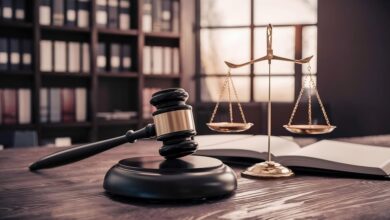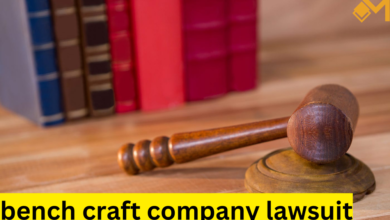Parking lot accidents are surprisingly common due to congestion and various blind spots. Drivers often maneuver in tight spaces, increasing the risk of collisions with other vehicles or pedestrians.
These accidents can result in property damage or minor injuries, despite the lower speeds typically involved. Understanding the causes and taking precautions can help reduce the incidence of a car accident in a parking lot.
Common Causes of Car Accidents in Parking Lots
Car accidents in parking lots can result from different factors, including the following:
Distracted Driving
Drivers often engage in distractions like using phones, adjusting radios, or talking to passengers while navigating parking lots, diverting attention from their surroundings.
Speeding
Despite lower speed limits, some drivers exceed them. Spending beyond limits can reduce reaction time and increase the severity of collisions.
Poor Visibility
Limited visibility in parking lots can be caused by various things, such as:
- Vehicles
- Pillars, or
- Blind spots
This can lead to unexpected encounters and accidents.
Backing Out
Research shows that many parking lot accidents result from backing-out errors. Reversing vehicles poses risks, especially if drivers fail to check blind spots or rely solely on mirrors rather than turning around to look.
Failure to Yield
Drivers may disregard right-of-way rules, leading to accidents when multiple vehicles attempt to maneuver simultaneously.
Pedestrian Mistakes
Parking lots are shared spaces with pedestrians. Accidents can occur if drivers fail to yield or if pedestrians cross unpredictably.
Weather Conditions
Rain, snow, or ice can reduce traction and visibility. This can contribute to skidding or sliding accidents in parking lots.
Inexperienced Drivers
New drivers or those unfamiliar with navigating parking lots may struggle with spatial awareness or proper maneuvering techniques.
Improper Parking
Vehicles parked outside designated spots or improperly aligned can obstruct traffic flow and increase the risk of collisions.
Impaired Driving
Drivers under the influence of alcohol, drugs, or medication may have reduced reaction times and impaired judgment, heightening accident risks.
Determining Liability in Parking Lot Accidents
Here are ten effective ways of determining liability in parking lot accidents:
Traffic Signs and Markings
Reviewing traffic signs and markings in the parking lot provides initial clues about right-of-way and designated lanes.
Witness Statements
Gathering statements from witnesses who observed the accident can provide valuable perspectives on what transpired.
Security Camera Footage
Checking footage from security cameras installed in the parking lot can offer visual evidence of how the accident occurred.
Vehicle Damage
Examining the location and extent of damage on each vehicle involved can indicate the point of impact and potentially who was at fault.
Driver Statements
Obtaining statements from drivers involved in the accident helps understand their version of events and any admissions of fault.
Police Report
If law enforcement responded to the scene, their report documents details such as weather conditions, statements from witnesses, and preliminary findings on fault.
Vehicle Positioning
Assessing the final resting positions of vehicles post-accident can reveal which direction each vehicle was traveling and the potential fault.
Speed and Maneuvering
Determining the speed of the vehicles and the nature of their maneuvers (e.g., turning, reversing) helps establish negligence.
Driver Visibility
Considering visibility factors such as blind spots or obstructed views due to other parked vehicles or structures.
State Traffic Laws
Applying relevant state traffic laws governing parking lots regarding speed limits, yielding, and right-of-way can clarify legal responsibilities.
Steps to Take After a Parking Lot Accident
Being involved in a parking lot accident can be disorienting, but taking immediate steps can mitigate potential issues and ensure proper handling of the situation. First and foremost, assess everyone involved for injuries and call emergency services if needed.
Secondly, gather essential information from all parties involved, including their names, contact details, and insurance information. This documentation is vital for filing an insurance claim accurately and efficiently.
Next, document the scene of the accident thoroughly by taking photos of vehicle damage, the surrounding area, and any relevant road signs or markings. This visual evidence can substantiate your claim and provide clarity to insurance adjusters or legal representatives.
After documenting the scene, notify your insurance company promptly to report the accident. Provide them with the gathered information and follow their instructions regarding claim procedures and necessary paperwork.
Lastly, if possible, obtain witness statements and contact information from anyone who witnessed the accident. Witness testimonies can corroborate your account of events and strengthen your insurance claim or legal case if disputes arise.
By following these steps diligently after a parking lot accident, you can navigate the aftermath more effectively. A skilled lawyer can ensure your rights are protected while seeking resolution for any damages or injuries incurred.
Awareness and responsible driving behavior are key to preventing car accidents in parking lots. This ensures the safety of not only motorists but also other parking lot users.
Also Read: https://usatimenetwork.com/




